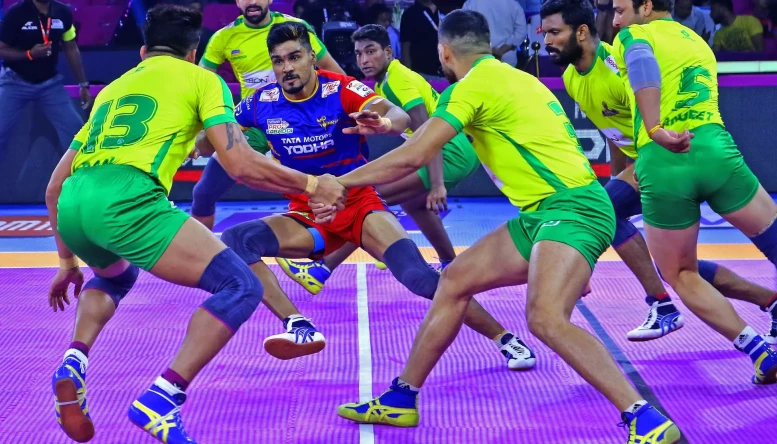Challenges faced by players from Clay to Mat in Kabaddi
The game of kabaddi was originally played on clay surfaces in the villages of India
 The shift from mud to mat transforms kabaddi
The shift from mud to mat transforms kabaddiEven now most of the players began their careers on clay surfaces and kabaddi tournaments or a local clay Akhada is very much a part of the local cultures of many places in India.
It was during the Asian Games of 2002 that the mat was first used in an international event. This change was also immediately accompanied by the use of shoes as playing barefoot on the mat was not feasible at all. Now after two decades Kabaddi is invariably played on mats with players wearing shoes. But this has resulted in profound changes in the technicalities of the game, something similar to what had happened in Hockey after the change of turf.
For traditional clay players, the different surfaces meant they had to adapt to various new elements and change their playing style accordingly. B. C. Ramesh explained this as “The game on mud and that on the mat is very different. On mud, footwork mattered a lot for raiders. The game was more skill-based. Now only skill doesn’t work. You need to move a lot on the court and unsettle the defenders. On the mat, the speed of the game has increased a lot, so it is now about your skill, speed and strength,”
The main difference is about the grip. On the mud, there is less friction as compared to the mat and thus the foot can skid. While on the other hand, the mat has a greater coefficient of friction which translates to a better grip. The importance of this difference is elaborated by Rakesh Kumar “For the raider, the mat offers a more suitable grip to execute a wide range of skills. Be it the jump, the dupki, or the other feints, it is easier as he has a firm footing on the mat. On the mud, it is harder as the raider often slips while attempting those skills,” he further adds “It works the other way round for defenders. The loose footing on the mud helps absorb the shock the body goes through when it clashes with the raider. On the mat, it is not the case. The pressure is all on your legs as it doesn’t skid. That’s why you don’t see many single-man blocks or chain tackles succeeding on the mat,”.
But there are a few advantages for the defender too as explained by Dronacharya Award winner Rambir Singh Khokhar - “On the mud, we saw very few dive tackles. But on the mat, the dive catches have increased. Even though the ankle holds are not as frequent on the mat due to the increased speed of the game, the dive is a lethal weapon on the new surface,”
“Playing on the mat, a player who falls down has almost no chance of breaking free from the defence but on clay, the surface gives the players better options. A defensive player can afford to make a mistake on the mat as playing on the mat gives the other defensive players to cover quickly,” said former Indian Captain and 2 time Asian Games gold medallist, Rajarathinam.
Apart from the change in playing tactics and skill set, the use of mat has also made significant contributions to the popularity of the game. Earlier what was seen as primarily a rural sport has now reached metropolitan Indoor stadiums, thanks to the mat. Mat has also helped Kabaddi acquire the international stature that it enjoys nowadays. “The mat has made the sport more glamorous. You can’t sell anything without that hint of glamour attached to it. We still love playing on both surfaces, but I’m sure that kabaddi would have never become so popular if we had the Pro Kabaddi in mud,” said Anup Kumar, one of the most decorated players in India.
Editor's Picks
- 01
Brendon McCullum: England ready to be 'really brave' in team selection for India series
- 02
Diogo Jota inspires Liverpool surge as injuries fail to dampen Premier League lead
- 03
Cameron Norrie ready to go toe-to-toe with the big boys after stellar Australian Open run
- 04
Maxwel Cornet confident of scoring run after opening West Ham account